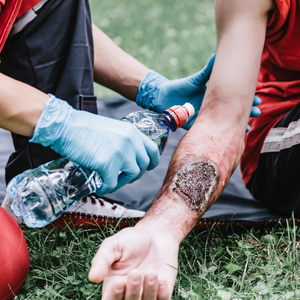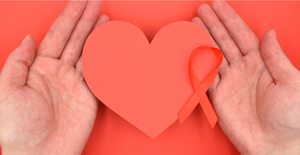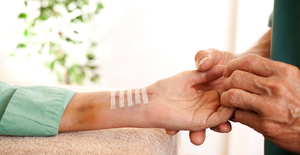Key points
- Choking is a serious, sudden emergency that can be life-threatening without quick intervention.
- Recognizing signs of choking such as distress, inability to talk, frantic coughing, unusual breathing sounds, and hands clutching at the throat is crucial.
- The Heimlich maneuver is a lifesaving procedure to assist choking victims, with different techniques for adults and infants.
- Prevention of choking includes adequate chewing of food, attention to potential hazards, and cutting food into small pieces for children.

Choking is a serious and potentially life-threatening emergency that can occur at any time and in any place. Knowing how to respond quickly and effectively can make the difference between life and death.
In this article, you will learn essential steps to take if you encounter someone who is choking — including how to recognize the signs of choking and the proper technique for doing the Heimlich maneuver. Whether you're at home, in a restaurant, or out in public, having the knowledge and confidence to assist someone who is choking can truly be a lifesaving skill that everyone should know.
Symptoms of Choking
Choking happens suddenly and without warning. According to the Red Cross, it poses a significant risk because, after just a couple of minutes without air, someone who is choking can fall unconscious. After several minutes, brain damage and death can result.
Understanding the signs and symptoms of choking is important, so you know when to jump into action and provide potentially life-saving assistance. Here are the symptoms of choking, according to the Red Cross:
- Panicked and distressed behavior
- The inability to talk in complete sentences or at full volume (and sometimes not at all)
- Frantic coughing (or trying to cough)
- Unusual breathing sounds, such as wheezing or whistling (this is called stridor)
- Hands clutching at the throat
- Watery eyes
- Red face and sometimes a blue-ish tint around the lips
What Should I Do if Someone Is Choking?
If you realize someone around you is choking, the first thing to remember is to stay calm. You will have a greater ability to help them if you can calmly move through the steps to administer first aid, according to the Red Cross. Here are the steps to follow:
Mild Choking
If they are still able to speak, they may have a partial blockage of their airway. This can become a full blockage if the food or object is not removed. You can help by doing the following:
- Encourage them to keep coughing to try to clear the blockage
- Ask them to try to spit out the object if it's in their mouth
- Do not put your fingers in their mouth to help them as this could push the object farther into the airway
Severe choking
If the person who is choking cannot talk, seems frantic, is turning red or blue, or gives the universal sign for choking (hands around the neck), then you should administer the Heimlich maneuver. This maneuver is slightly different for an infant or small child and adult, according to the Red Cross.
Heimlich maneuver for an adult:
- Give 5 sharp back blows between their shoulder blades with the heel of your hand.
- If the back blows do not help, give up to 5 abdominal thrusts by standing behind the choking victim and using a palm-over-fist technique. Position your fist just above the naval and sharply thrust your fist in and upward.
- Dial 911 and continue alternating back blows and the Heimlich maneuver until the foreign object is dislodged or the choking victim goes unconscious.
- Begin CPR if the choking victim becomes unconscious.
Heimlich maneuver for a child under one year of age:
- Sit and hold the infant facedown on your forearm. Rest your forearm on your thigh and hold the infant's chin and jaw to support the head. Tilt the child’s head lower than the rest of their body.
- Thump the infant gently but firmly five times in the middle of the back, using the heel of your hand.
- If the foreign object has not dislodged, turn the infant faceup on your forearm, continuing to keep the infant's head lower than the trunk of the body, and give five gentle but firm chest compressions with your fingers. Your fingers should be placed just below the nipple line. Press down about 1 1/2 inches. Let the chest rise between each compression.
- Dial 911 and repeat the back thumps and chest compressions in an alternating fashion.
- Begin infant CPR when the airway becomes clear if the infant doesn't immediately start breathing.
What are Abdominal thrusts?
Abdominal thrusts, also known as the Heimlich maneuver, are a first aid technique used to treat choking victims who are conscious. The procedure involves standing behind the choking victim and using your fist to thrust in and upward to dislodge the foreign object from the airway (windpipe). Here are the exact steps to giving abdominal thrusts, according to the Red Cross:
- Stand behind the choking victim
- Place your arms around their waist and bend them forward slightly
- Clench 1 fist and place it right above the navel (belly button)
- Put the other hand on top of your fist and pull sharply inwards and upwards
- Repeat the thrusts 5 times
- Call 911 if the first 5 abdominal thrusts are not successful
- Be prepared to begin CPR (rescue breathing and chest compressions over the breastbone) if the choking victim goes unconscious
How to Prevent Choking
Choking can happen anytime, to anyone. The best treatment for choking is doing what you can to prevent it. For adults, this means taking the time to adequately chew your food when you’re eating. For young children, there are other safety measures you should take:
- Pay attention to potential choking hazards and safety warnings on toys
- Cut foods into small pieces, especially foods that are commonly choked on like hot dogs and grapes
- Be aware of small items that are on the floor or within reach of young children
FAQs
What are the signs of choking?
Signs of choking include panicked behavior, difficulty speaking, frantic coughing, unusual breathing sounds, hands clutching at the throat, watery eyes, and a red face.
What should I do if someone is mildly choking?
Encourage them to cough to clear the blockage and to spit out the object if it's in their mouth. Do not put your fingers in their mouth as it could push the object farther into the airway.
How is the Heimlich maneuver performed on an adult?
Administer 5 sharp back blows, then 5 abdominal thrusts if needed. If unsuccessful, dial 911 and continue the procedure until the object is dislodged or the victim becomes unconscious, at which point begin CPR.
How is the Heimlich maneuver performed on an infant?
Hold the infant face down on your forearm and administer 5 back thumps. If unsuccessful, turn the infant faceup and give 5 chest compressions. Dial 911 and continue the procedure. If the airway becomes clear and the infant doesn't start breathing, begin infant CPR.
How can choking be prevented?
Choking can be prevented by adequately chewing food, paying attention to potential hazards, and cutting food into small pieces for children.









